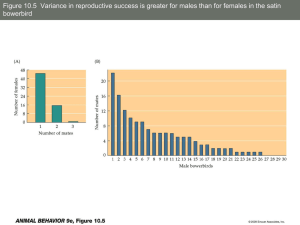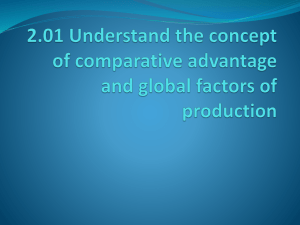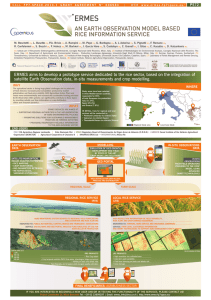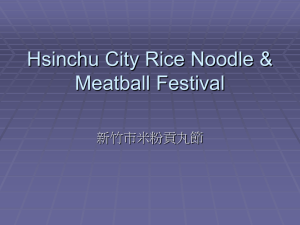rice export
advertisement
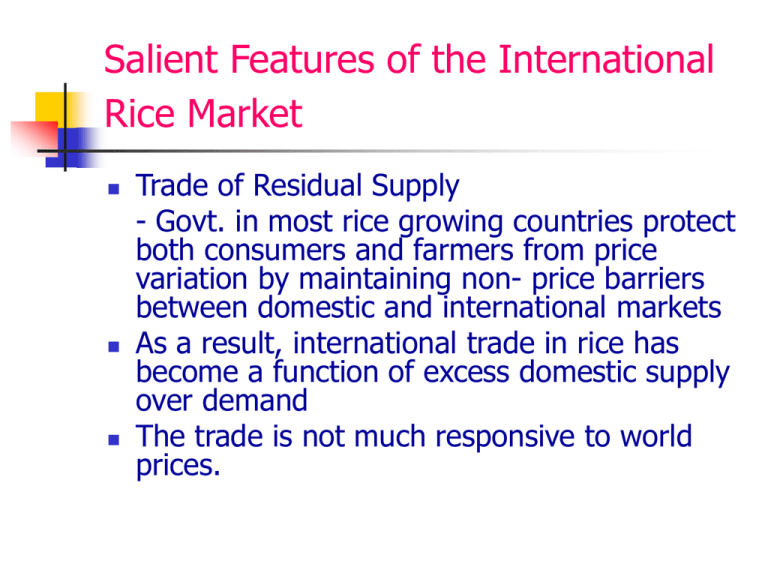
Salient Features of the International Rice Market Trade of Residual Supply - Govt. in most rice growing countries protect both consumers and farmers from price variation by maintaining non- price barriers between domestic and international markets As a result, international trade in rice has become a function of excess domestic supply over demand The trade is not much responsive to world prices. Salient Features of the International Rice Market Thin International Market - world rice market is thin in relation to world production - Less than 5 percent of annual rice production is traded internationally. - Bulk of rice production occurs in the Asian countries which are also major rice consumers Salient Features of the International Rice Market High price volatility - Thinness of the international market leads to increased price volatility - It creates added incentives for self sufficiency in rice, further thinning the market Salient Features of the International Rice Market High search and transaction cost - fluctuation in the participants’ share in the market - absence of fixed trade channel leads to high search and transaction cost - Each decision to enter the market generally requires a new search for trading partner. Salient Features of the International Rice Market Non-homogenous commodity - different varieties and grades are preferred by different consumers - Many attributes influence the value of the produce resulting in large price differentials among different grades Indicators of global competitiveness Basmati rice Location: karnal, Haryana Exported from kandla port NPC = 0.89 EPC = 0.88 ESC = 0.74 DRCR = 0.48 Although basmati rice is sufficiently price competitive, India has failed to perform sufficiently well in rice trade Perspective on rice exports Supply constraints - Need to augment production of basmati rice - Backward and forward linkages to farmers Procurement constraints - Lack of requisite statistics for purchase planning by the exporters - High incidence of local taxes/charges Perspective on rice exports Processing constraints - Excessive investment in rice milling capacity - milling capacity of 286 million tons of paddy against production of about 120 million tons. - low cost of installation and replacement of rice huller - low capacity utilization (180-220 days in a year) Perspective on rice exports Low incidence of modern rice mills Levy disincentives to exporting rice mills - most exporters are merely traders instead of processor-cum-exporter Exporter pre-qualification is absent - only registration with APEDA - most rice traders are fly-by-night operators, striving to maximize short term gains


